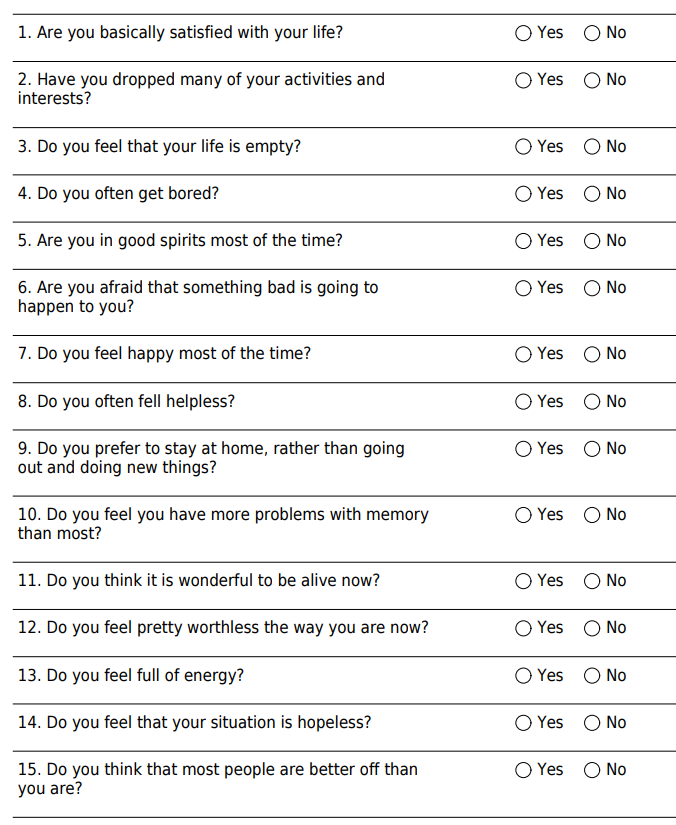Objective: To evaluate the association between exercise and depression in people with Parkinson’s disease (PD).
Background: Depression and other neuropsychiatric disturbances are prevalent non-motor features in PD that result in significant reduction in quality life [1]. Studies have demonstrated that exercise can be used to reduce depression and protect against new onset depression in the general population [2]. Likewise, exercise in people with PD has been shown to improve overall motor function, balance, and gait, with some results suggesting it may slow motor progression in PD [3].
Method: Our movement disorder clinic is a site for a larger study by the Parkinson’s Foundation in the screening and treatment of depression in PD. The Geriatric Depression Scale Short form (GDS-15) was used to screen people with PD with a score greater than four suggestive for depression [Figure 1]. We did a retrospective chart review on patients who received a GDS-15 score between August-November 2021 noting if patients were in a regular exercise program (e.g. group program, personal trainer, or current ongoing physical therapy).
Results: A total of 196 patient charts were reviewed. Patients were seen by 3 separate providers. See Table 1 for demographics between patients score 0-4 on the GDS-15 scale (not depressed) and patients scoring 5-15 (depressed). Participating in a regular exercise program had a relative risk reduction of scoring 5 or more on the GDS-15 (depression) by 67%, with the number needed to treat to prevent a positive GDS15 screening being 3.67 people. The overall odds of scoring 4 or less on the GDS-15 if a patient with PD is participating in a regular exercise program was 3.1 (Upper 95% CI 5.53, Lower 95% CI).
Conclusion: Our results demonstrated that participation in a regular exercise program was significantly correlated with not meeting the threshold for depression as defined by the GDS-15 scale in people with PD. Whether or not the exercise program alleviates symptoms of depression or depression itself negatively affects participation in exercise is a cause for future exploration.
References: 1. Marsh L. Depression and Parkinson’s disease: current knowledge. Curr Neurol Neurosci Rep. Dec 2013;13(12):409. doi:10.1007/s11910-013-0409-5
2. Harvey SB, Øverland S, Hatch SL, Wessely S, Mykletun A, Hotopf M. Exercise and the Prevention of Depression: Results of the HUNT Cohort Study. Am J Psychiatry. 01 01 2018;175(1):28-36. doi:10.1176/appi.ajp.2017.16111223
3. Tsukita K, Sakamaki-Tsukita H, Takahashi R. Long-term Effect of Regular Physical Activity and Exercise Habits in Patients With Early Parkinson Disease. Neurology. Feb 22 2022;98(8):e859-e871. doi:10.1212/WNL.0000000000013218
To cite this abstract in AMA style:
N. Bonsavage, A. Brown, T. Davis. Regular Exercise Regimen Associated with Reduced Prevalence of Depression in Parkinson’s Disease [abstract]. Mov Disord. 2022; 37 (suppl 2). https://www.mdsabstracts.org/abstract/regular-exercise-regimen-associated-with-reduced-prevalence-of-depression-in-parkinsons-disease/. Accessed December 24, 2025.« Back to 2022 International Congress
MDS Abstracts - https://www.mdsabstracts.org/abstract/regular-exercise-regimen-associated-with-reduced-prevalence-of-depression-in-parkinsons-disease/

